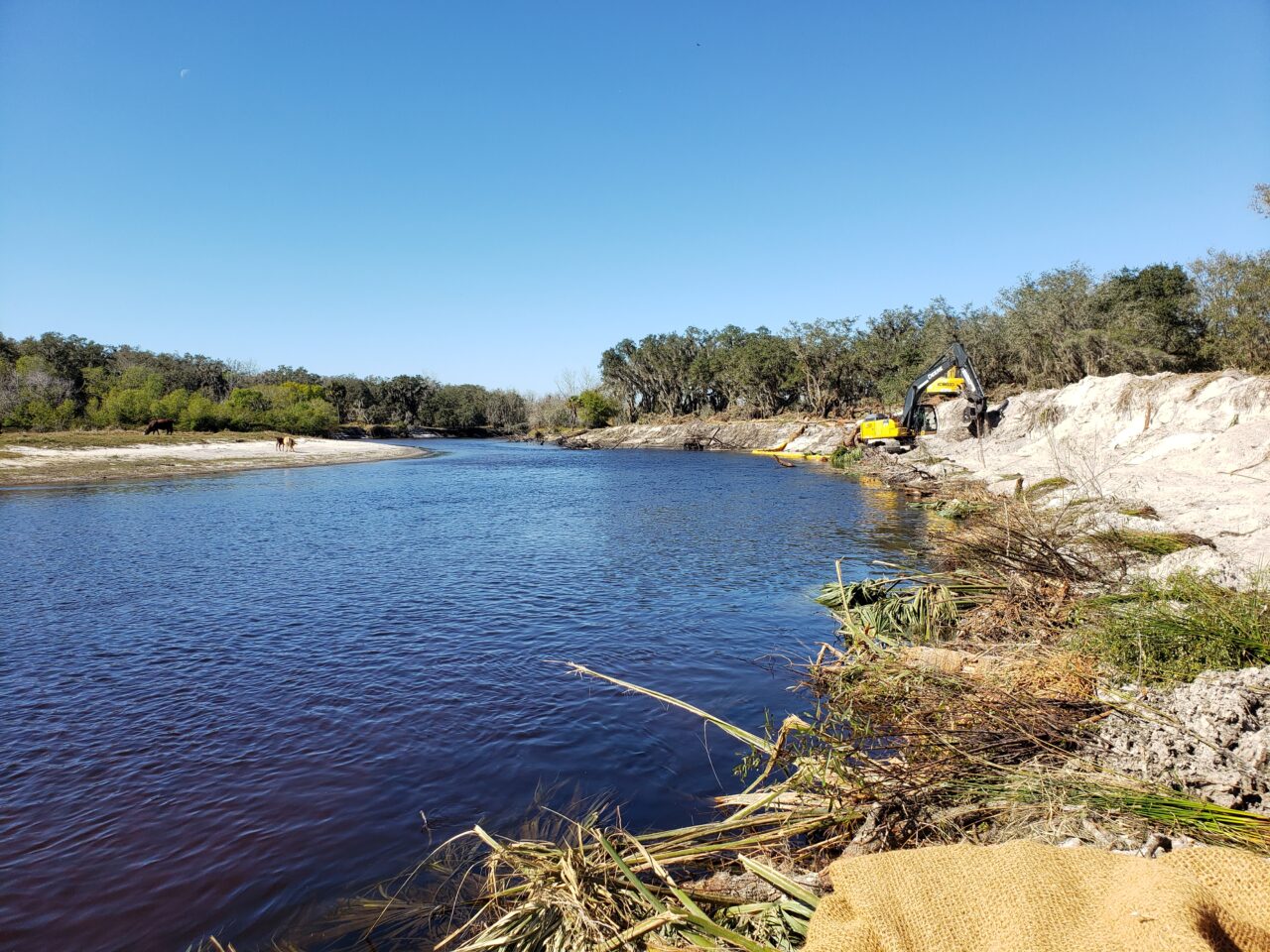
The Florida Fish and Wildlife Conservation Commission has completed a nine-month project to restore two severely eroding riverbanks along the Peace River in southwest Florida.
Biologists from the FWC joined the U.S. Fish and Wildlife Service to complete the project.
The project started when the FWC completed an assessment of the Peace River, which included an evaluation of more than 300 miles of stream.
Through that assessment, the FWC identified locations for several critical projects that showed streambank erosion, including a 450-foot bank just south of Zolfo Springs and a 1,000-foot stretch of riverbank south of Arcadia.
Such erosion and associated channel sedimentation are the leading causes of habitat degradation and biodiversity decline in Florida rivers and streams, making them a priority for the FWC. Erosion and sedimentation are accelerated by changes to flow rates and patterns, often caused by development within the river’s watershed, and loss of shoreline vegetation.
On both sites, the riverbanks were recontoured with machinery using a method called Natural Channel Design.
The NCD technique uses layers of logs and other woody debris as a foundation to build out the eroded shoreline.
The new riverbank was then modified to create a floodplain bench that will reduce stress and help prevent future erosion. The rebuilt riverbank was covered in grass seed and coconut fiber matting, and planted with more than 1,500 native plants to help stabilize the new bank and promote biodiversity.
According to the FWC, this technique provides a more aesthetically-pleasing, natural result than traditional river stabilization techniques, while also providing a great habitat for fish and wildlife. Over time the coconut fiber matting will deteriorate as the plants continue to grow and mature, creating natural stream conditions.
The Peace River is a corridor between wetlands that connect Florida’s terrestrial habitats to its marine habitats. It also is known for fossil finds, particularly shark’s teeth and bones, according to Visit Florida.




One comment
Sonja Fitch
March 14, 2021 at 3:48 pm
That is wonderful! Peace River ! Thank you! Vote Democrat up and down ballot for the elections in 2022!
Comments are closed.